Memorial to African Americans Enslaved by William & Mary 2018 Awarded 2nd Place
T E L L I N G P A T C H
Paula Allen, Yu Duk So, Dan Sztanga
“Genealogical trees do not flourish among slaves. A person of some consequence here in the north, sometimes designated father, is literally abolished in slave law and slave practice. It is only once in a while that an exception is found to this statement. I never met with a slave who could tell me how old he was. Few slave-mothers know anything of the months of the year, nor of the day of the month. They keep no family records, with marriages, births, and deaths. They measure the ages of their children by spring time, winter time, harvest time, planting time, and the like; but these soon become undistinguishable and forgotten. Like other slaves, I cannot tell how old I am.”
~ from My Bondage and My Freedom by Frederick Douglass
Ninety-one columns populate the space between two planes, one floating above another that rests upon the grass. Every column bears the name of a slave in raised letters that catch the sun and cast shadows by day and become a glowing constellation by night. Each plane is pierced by an ellipse; one opening to the sky, the other pushing down into the earth, admitting light and rain into a garden that recalls the past as it marks the passage of seasons. As new names are discovered the column grid will grow denser; the additions attesting to the school’s dedication to telling the slaves’ story and lending weight to it.
Inspired by the tobacco fields of the Nottoway Quarter and the typology of spartan slave quarters, the Telling Patch sits at the nexus of pathways that lead from the Wren Building to the Sunken Garden, and from Tucker Hall to Ewell Hall. Sited where 18th century gardens once stood, it is conceived as a rectangular wrap-around porch, its length and width matching those of the Wren Building’s forecourt. The paving pattern of the stone platform is reflected in the composition of the canopy’s steel panels. The existing pathways are preserved with the east-west axis bridging over the sunken terraces of the garden. The elliptical garden tilts toward the diagonal path, its perimeter broken by the north-south pathway that steps down, passes through the center, and rises again on the opposite side.
The garden terraces are planted with flowering tobacco and sunflowers that tell of the yet unnamed slaves and their lives of labor at the Nottoway Quarter. Tending the garden is an act of recompense. Our purpose is to give name to the nameless, to give presence to an almost lost history, to mark the passage of seasons as slaves marked the years of their lives, and to give form to the invisible by restoring the humanity of the lives stolen by bondage. By elevating the modest porch and the tobacco field from the profane to the sacred we honor the lives and the immeasurable sacrifice of the people who built, supported, and sustained the University.


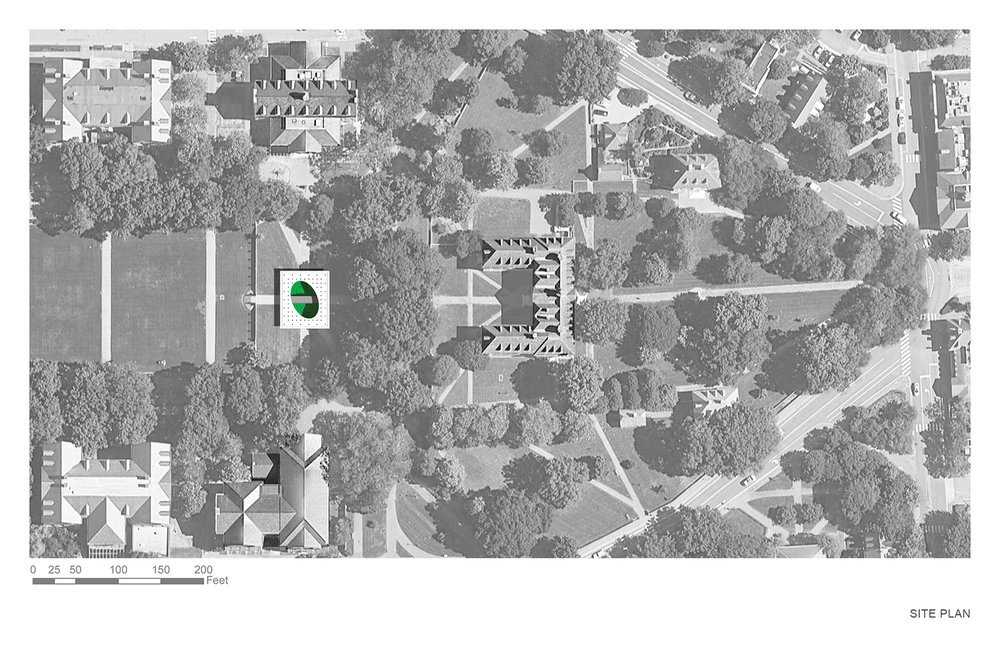

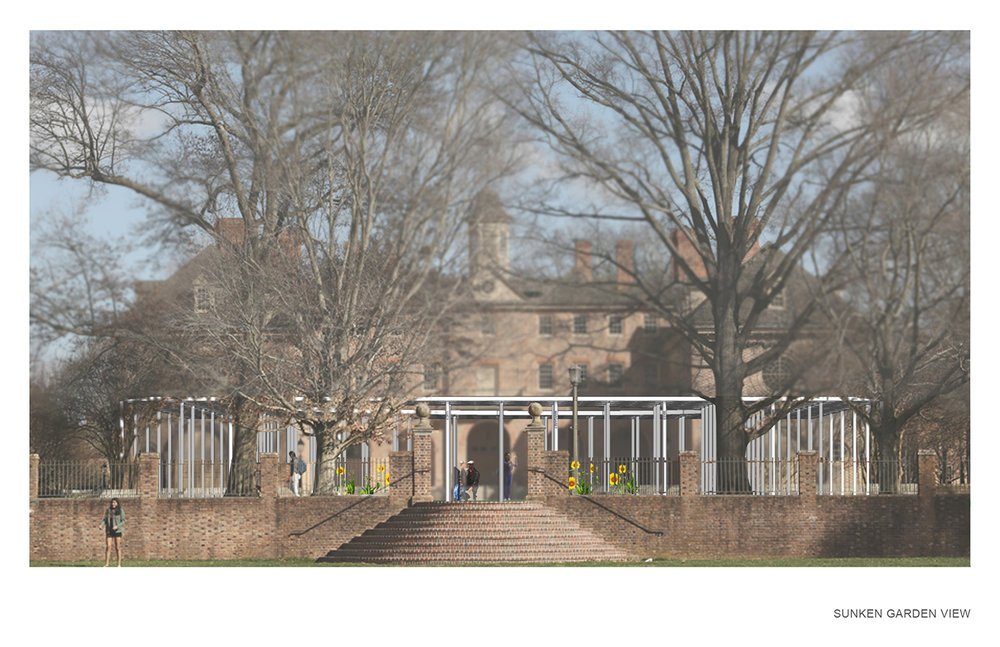

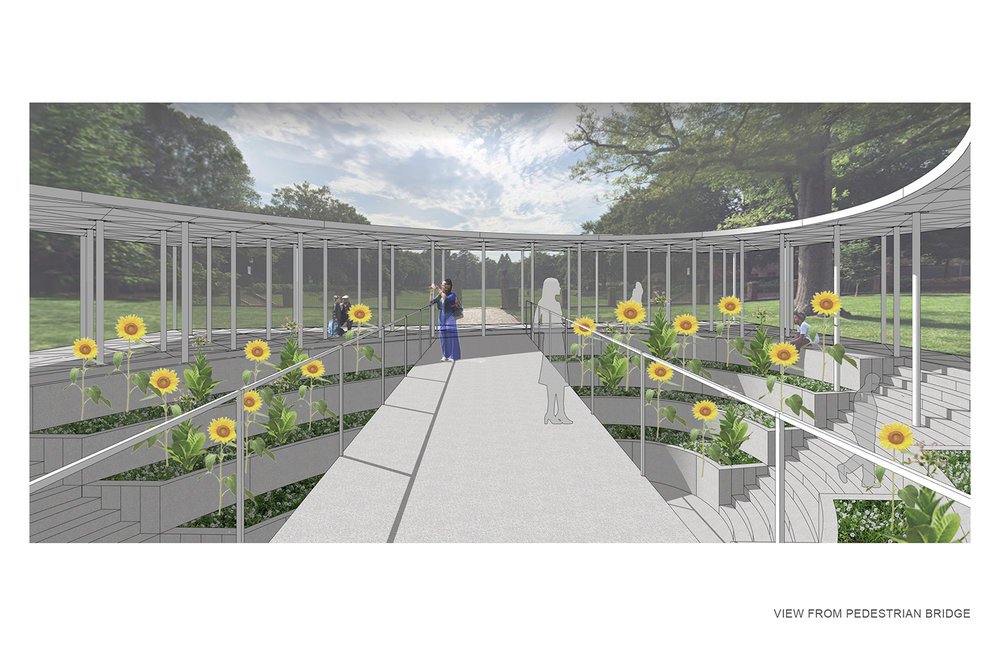
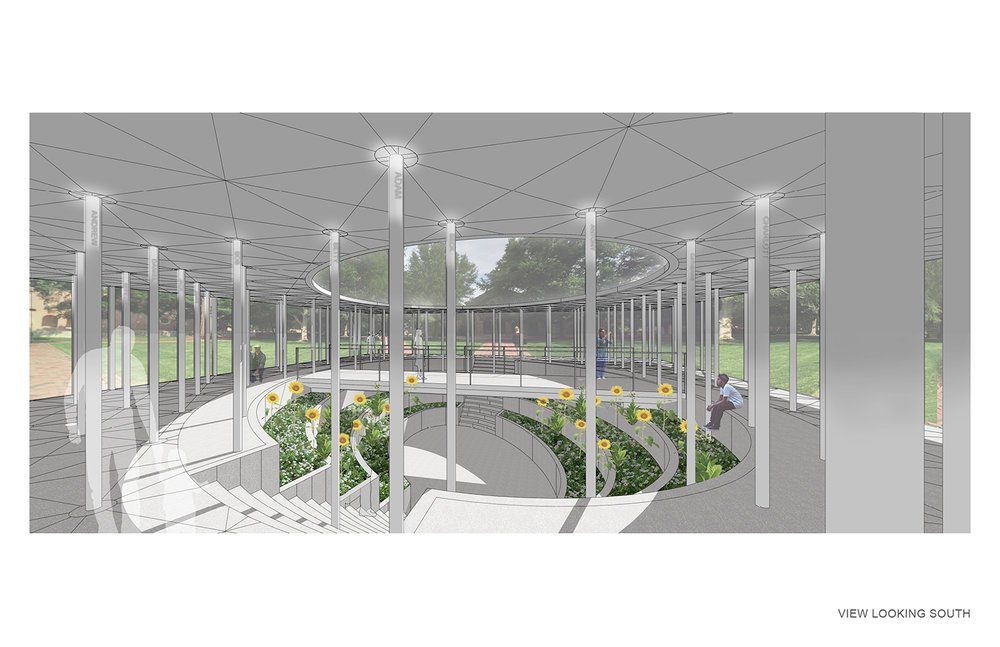
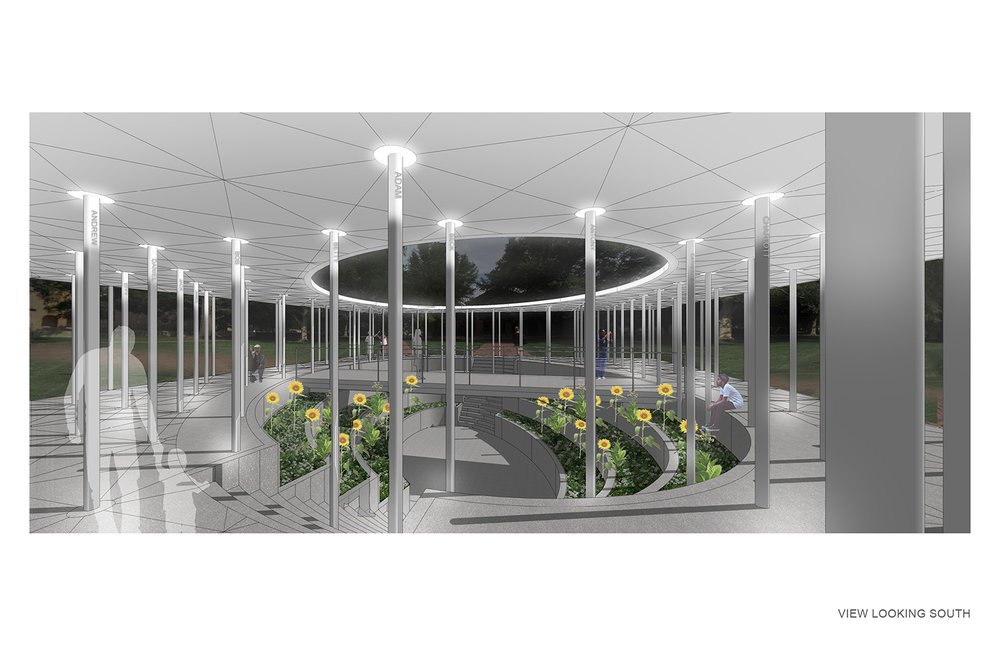
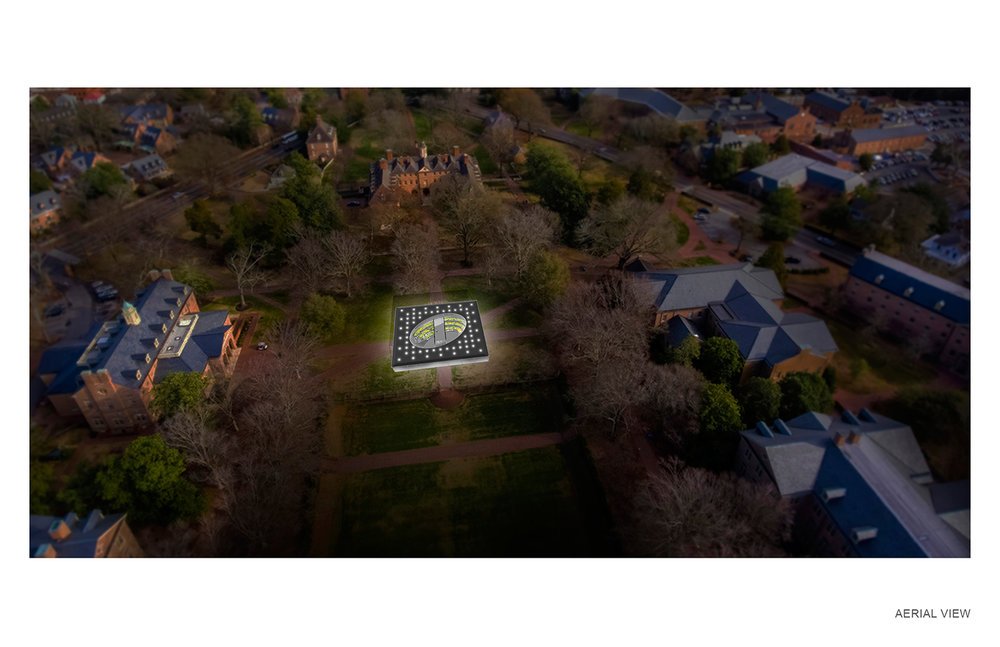
call for entries
Memorial to African Americans Enslaved by William & Mary
The Lemon Project Committee on Memorialization (LPCOM), acting on behalf of William & Mary and its Board of Visitors, invites submissions for a design concept for a memorial to the men, women and children whose labor and lives William & Mary held in bondage from its founding until the Civil War. We seek a conceptual design for a physical memorial that establishes a new place of community and contemplation within or directly engaging with the setting of William & Mary's Historic Campus. By virtue of its scale, location, materials and narrative content, the conceptual design will create a noble and lasting tribute to the memory of the people who built and served the university.